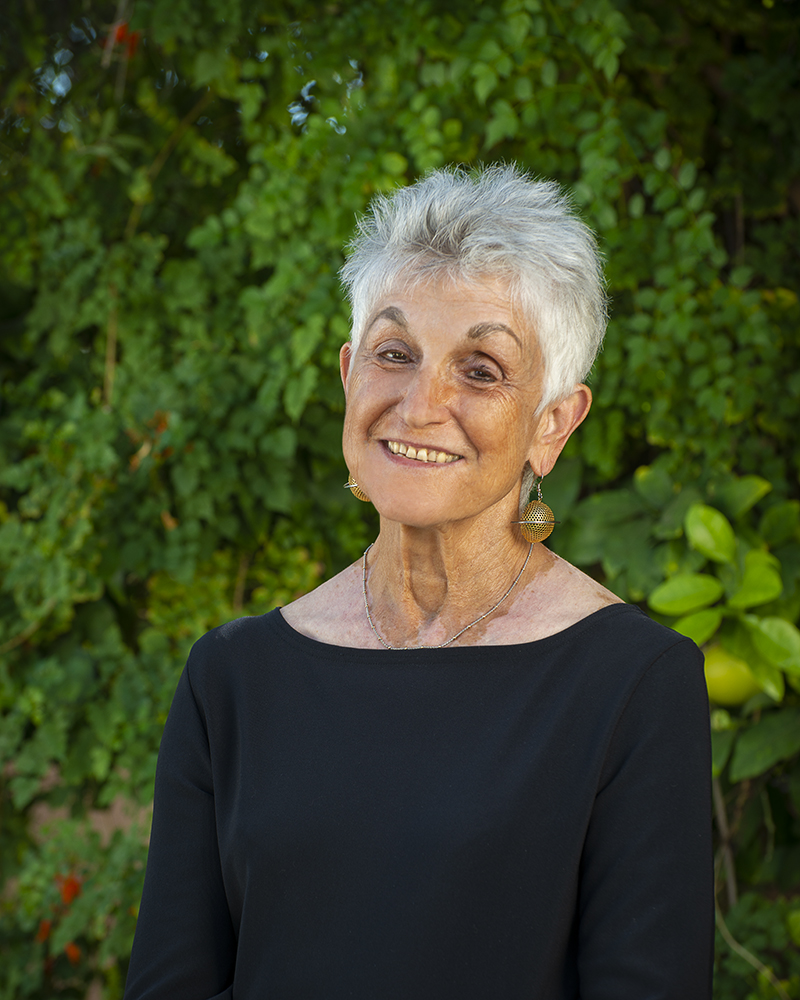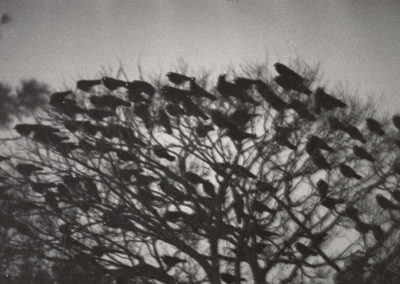Norton Gallery of Photography at Phoenix Art Museum
January 19 through June 26, 2022
Acquired in 1988 by the Center for Creative Photography (CCP) in Tucson, with grants from the Hitachi Corporation, this exhibition encompasses the full collection of 87 prints by 19 contemporary Japanese photographers, seen together here for the first time since their acquisition. The exhibition groups the works of each photographer together; each grouping is accompanied by (short) labels in English and Spanish, that describe each artist’s work, as well as title, medium and date labels for each work. Any quotations used in the following are drawn from the exhibition labels.
While recovering from the devastation of World War II and the American occupation (1945-1952) of their country, Japanese photographers began a full-bore reassessment of the photographic medium adopting a “radically expressive, subjective, and critical approach that responded to the realities of a rapidly changing, modernizing and Westernizing Japan” according to the exhibition label.
The title of the exhibition, Farewell Photography, is taken from Daido Moriyama’s 1972 photo book with that title, which contained almost 100 black-and-white photographs. A hugely influential photographer, Moriyama promoted the are-bure-bokeh (rough, blurred and out-of-focus) aesthetic, the goal of which was to question the traditional associations of photography and to explore all the expressive capabilities of the medium. Moriyama and featured photographers, Masahisa Fukase, Shomei Tomatsu and Miyako Isuichi, played a definitive role in shaping postwar Japanese photography.
Although drawing on a similar ethos and aesthetic philosophy, the works in the exhibition vary greatly in terms of subject matter, visual appearance and intent. The labels do elucidate the artists’ meanings, but not always. Often, it is left up to the viewer to “decipher” what he or she is seeing and where the photographer is coming from. For example, five images by Masahisa Fukase entitled The Solitude of Ravens, hang at the beginning of the exhibition. Existing in the mythologies of cultures all over the world, the raven often symbolizes darkness and death, though also more positive things. Masahisa struggled with depression during much of his life. The images of ravens, not always clearly discernible, are dark and project an ominous mystery. Issei Suda photographs focus on textures and patterns that, with one exception of a pair of round fruits, perhaps applies, make his subject matter difficult to make out and thereby almost surreal.
Unlike many of his contemporaries, Eikoh Hosoe worked in his studio. Each of six striking photographs captures a woman wearing a kimono in fluid and expressive poses. The focus, untraditionally, is on the woman herself and perhaps, her character and personality. Although all images are in black-and-white, the viewer can almost see and feel the exquisite colors in the kimono. In his photo book, Japanesque, Ikko Narahara explores the eight key pillars of Japanese culture. The photos here focus on Zen and document the daily life and practices of Buddhist monks at the Soji Temple in Yokohama. In 1961, Shomei Tomatsu co-produced a photo book that evinces both his revulsion towards and fascination with the destruction wrought by the atom bombs dropped on Hiroshima and Nagasaki. One of the ‘emblematic’ images in his group shows a shiny, contorted shape that resembles a large, slithery creature, but turns out to be a glass beer bottle melted by the atomic blast.
Kikuchi Kawada explores the tensions that emerged in postwar Japan. His series, Los Caprichos, named after the series of etchings by Spanish artist Francisco Goya, focuses on the prevalent uneasiness of a changing Japan. His “portraits” of people, faces partially obscured by a veil, smoke or other semi-opaque material, come across as surreal and frozen in time. Daido Moriyama is known as the father of Japanese street photography, which he used as his form of aesthetic and social criticism. His images of urban life are described as gritty and chaotic, but riveting, given that the images in traditional photography tend to be organized and rational. Moriyama says, “I shoot freely. I am taking the pictures more with my body than my eye.”
Ittetsu Morishita was an anti-nuclear social activist, and his photos of survivors of the bombing of Hiroshima and Nagasaki include the six shown in the exhibition. These focus on one female older adult suffering the effects of the bombings including failing eyesight and breast cancer. The images are wrenching and in-your-face. On view are four photographs from Yoshiyasu Suzuka’s Face to Face series and three from his Prayer series. Both the faces and the praying hands are seen in hyper-closeup, which is both intriguing and unnerving. The subjects are identified only by their profession. The faces are exquisitely expressive, but without a surrounding context they raise only questions. One of only two women in the exhibition, Miyako Ishuichi grew up outside a U.S. military base and was continually warned that it was a dangerous place and to avoid it. Her images are grainy and off-putting. She says, “The natural choice is to photograph what you like. I chose what I hated.”
Norio Kobayashi’s nine photographs focus on the development of suburbs outside of Tokyo that led to the destruction and degradation of the natural landscape, an issue with which we in the United States are all too familiar. His images could be easily passed over as unexciting, but his message is that they and what they represent must continue to be confronted. Toshio Shibata’s focus on echoing that of Kobayashi, is on scenes outside urban areas where infrastructure projects are in the process of destroying the landscape. His images, however, abandon the are-bure-bokeh aesthetic in favor of sharply focused, tightly composed scenes, often featuring geometric elements. In contrast, Hiroshi Yamazaki’s series, poetically titled, The Sun is Longing for the Sea, encompasses soft-focus, almost abstract images. Horizontal streaks in the sea and above the water and shore barely trace the path of light and create a meditative, almost magical atmosphere.
All the above and more await the visitor in this excellent exhibition, drawn from the Center for Creative Photography’s collection. The photographs on view draw one in, open the eyes and stretch the mind. What more can a visitor ask?
Feature Image Above: Installation view of Farewell Photography: The Hitachi Collection of Postwar Japanese Photographs, 1961-1989, 2022, Phoenix Art Museum. Photo: Airi Katsuta

Karen Hodges
Contributing Writer
Karen Hodges worked in the Curatorial Department of Phoenix Art Museum (PAM) for over two decades. Although mostly involved with painting, sculpture and decorative arts, in all areas of the Collection, she fell in love with photography when the Museum’s cooperative agreement with the Center for Creative Photography (CCP) led to the establishment of the Norton Gallery. Work with Curator, Becky Senf, editing gallery and informational materials, deepened her interest in this art form. She served on the Board of INFOCUS from its founding as a PAM support group and continues to serve as “scribe” (secretary) to the Board of AZPA. Although self-described as a mediocre photographer, Karen has—within her means—collected photography and photo books for years and will continue to do so, even when she runs out of wall and shelf space!
Image Credit: Craig Smith
Contact Karen





